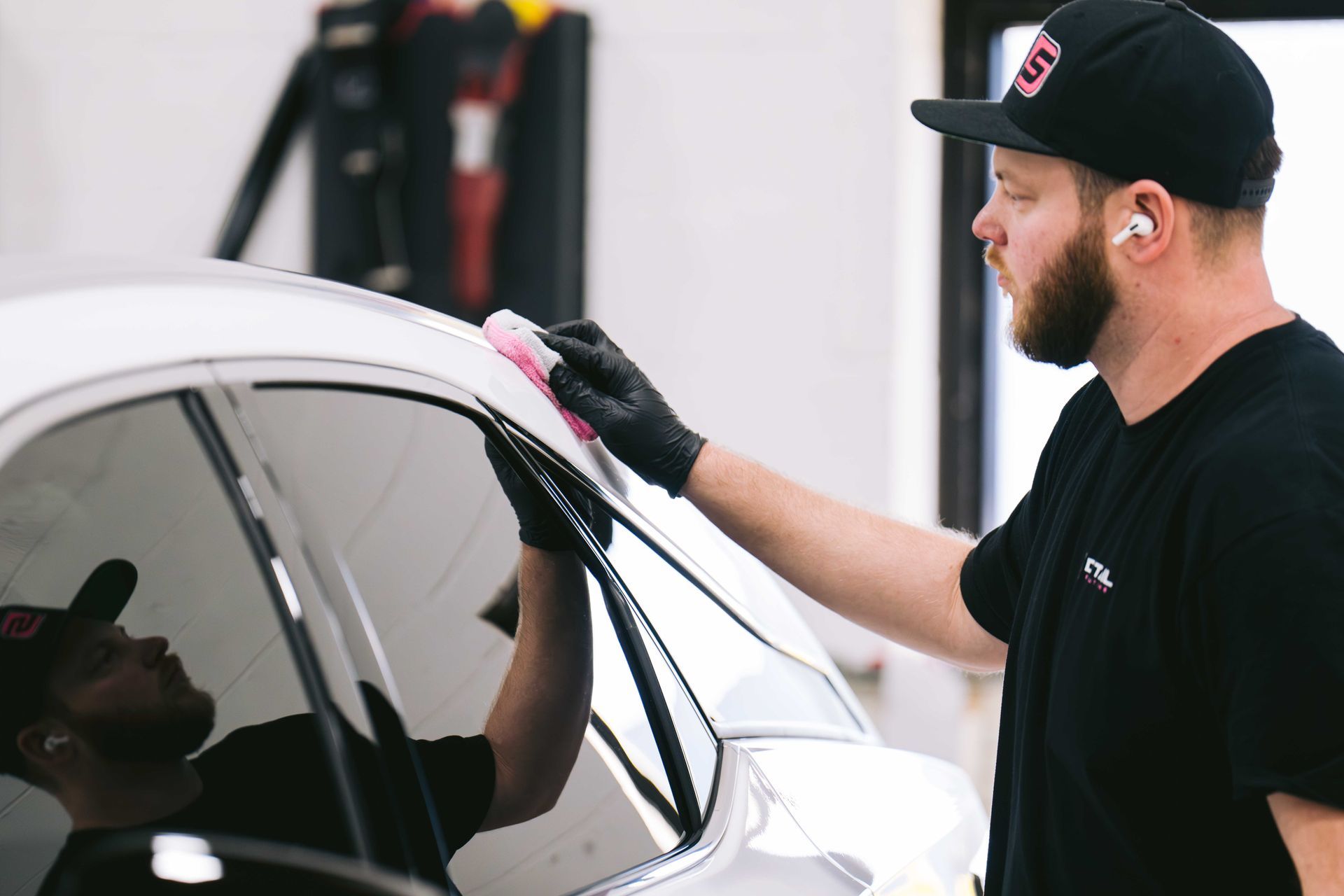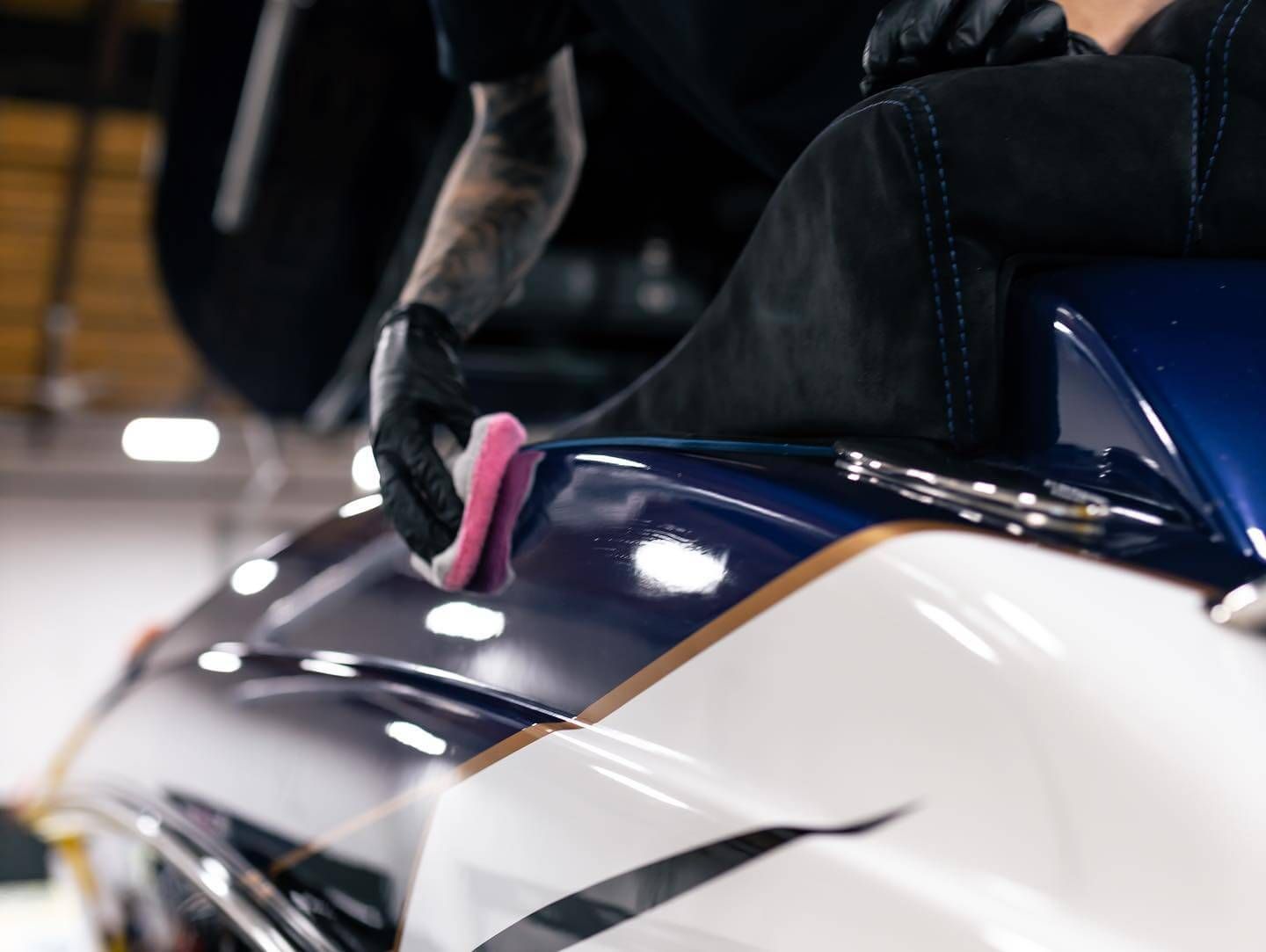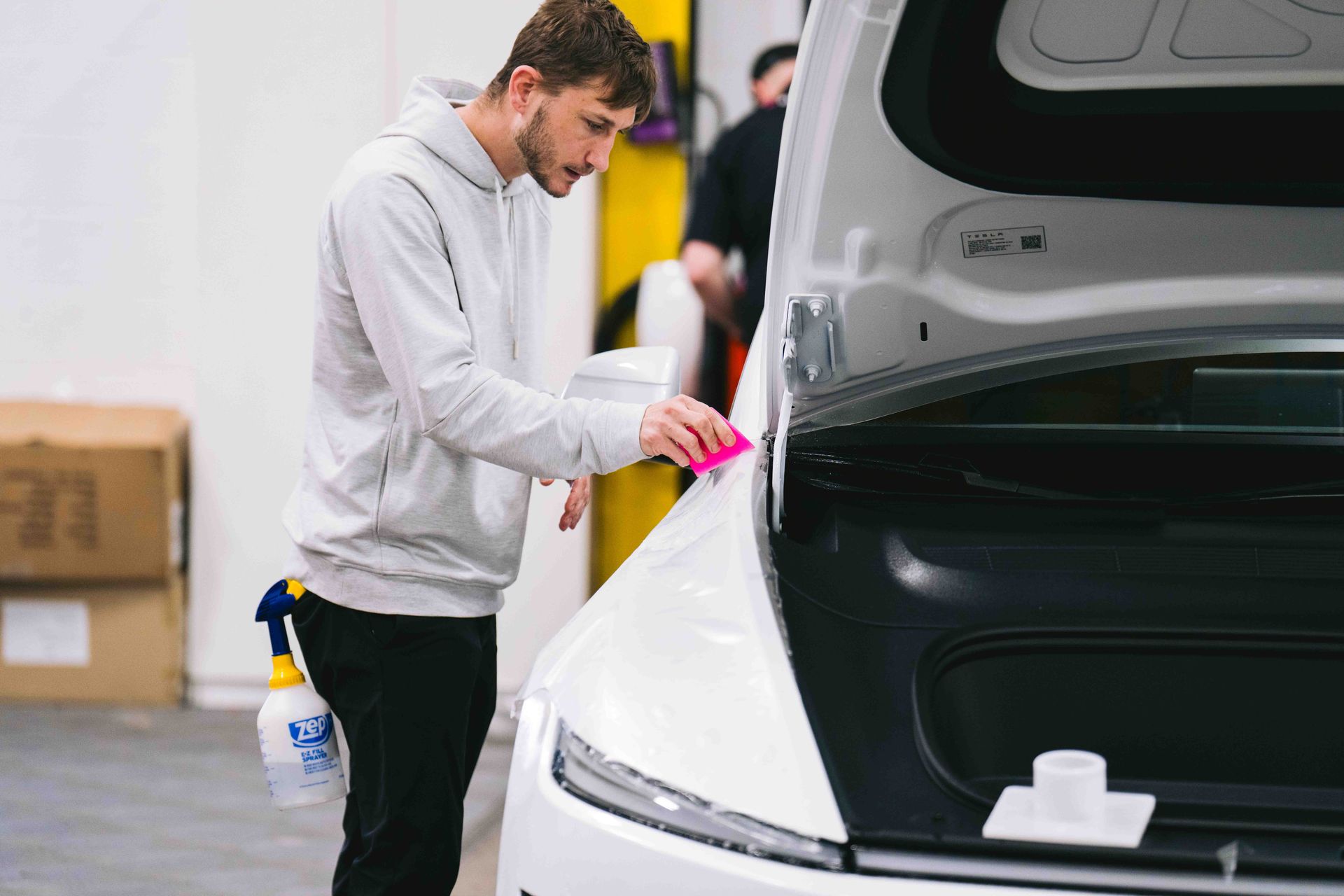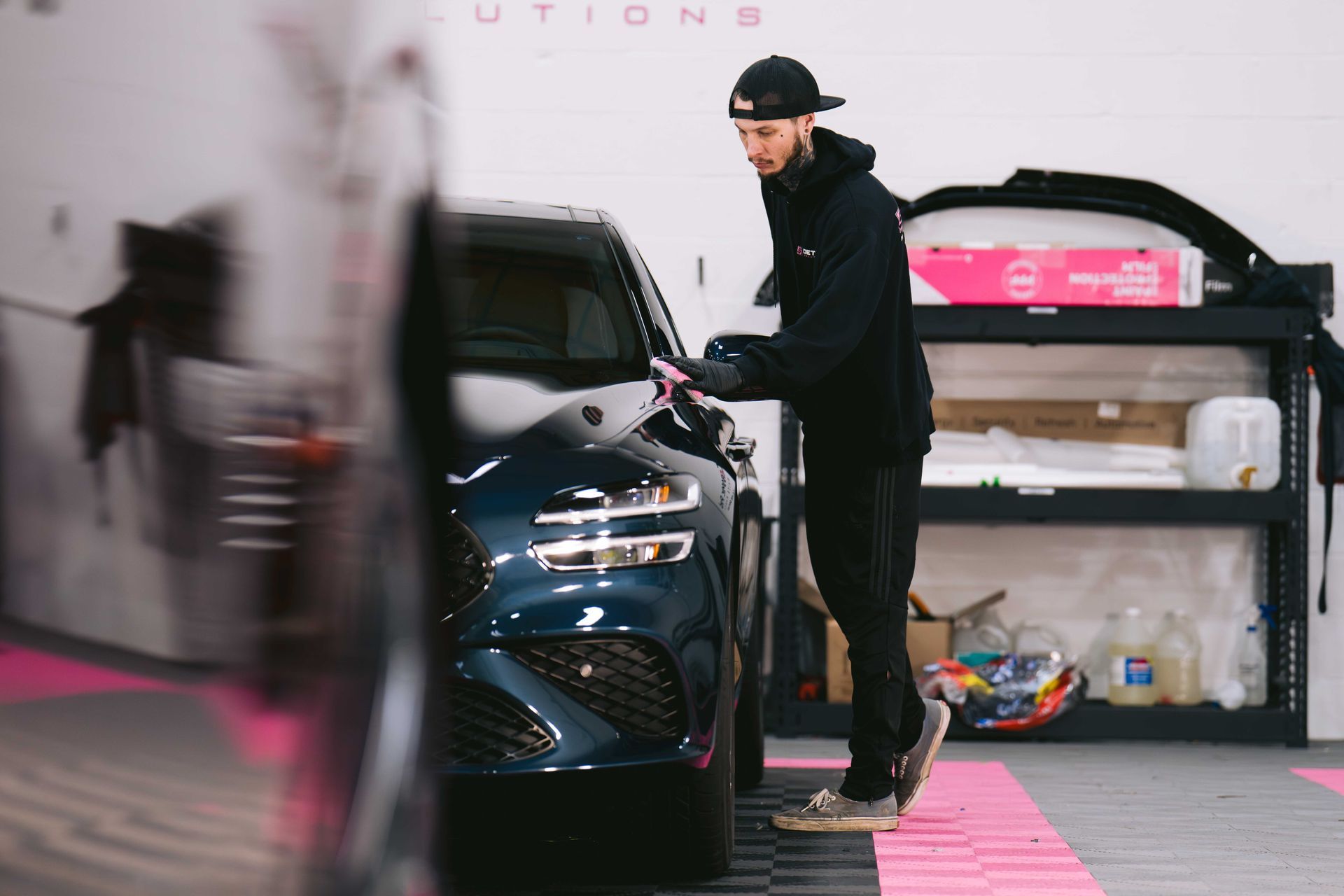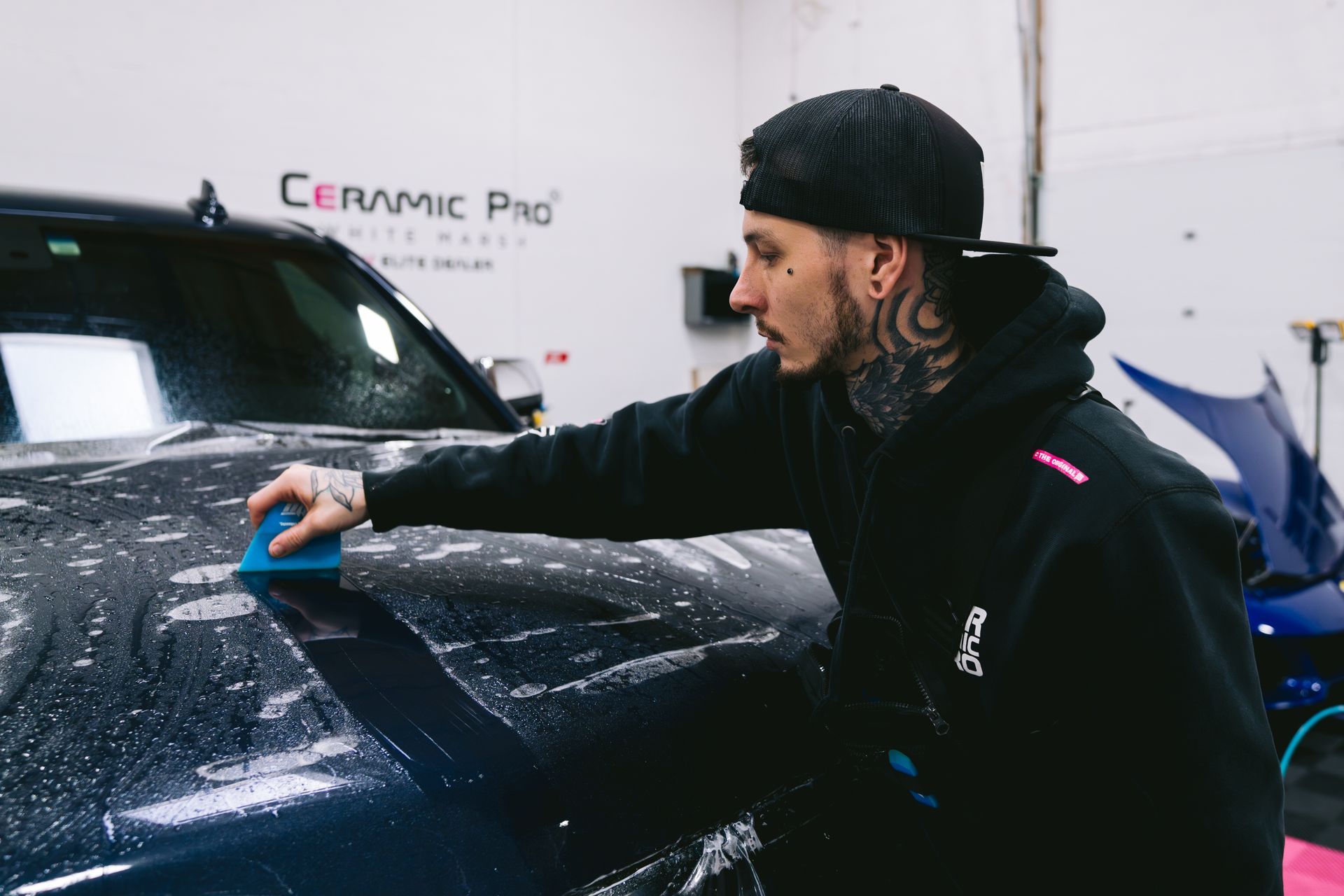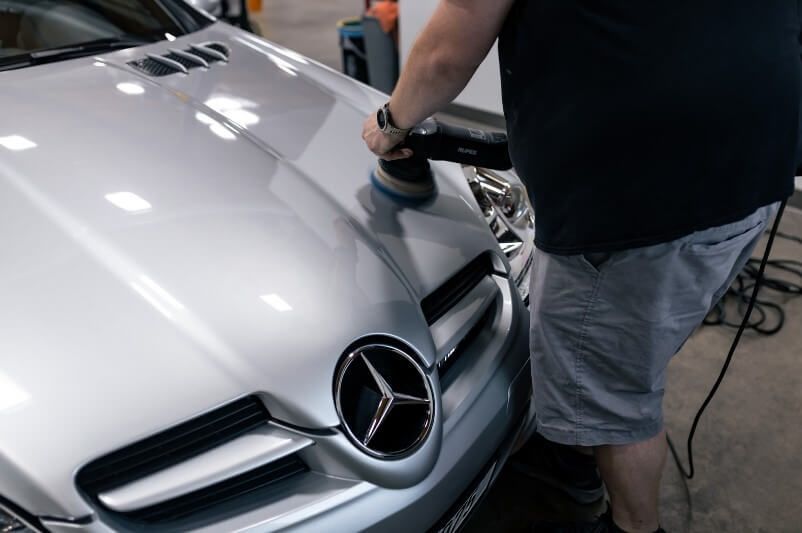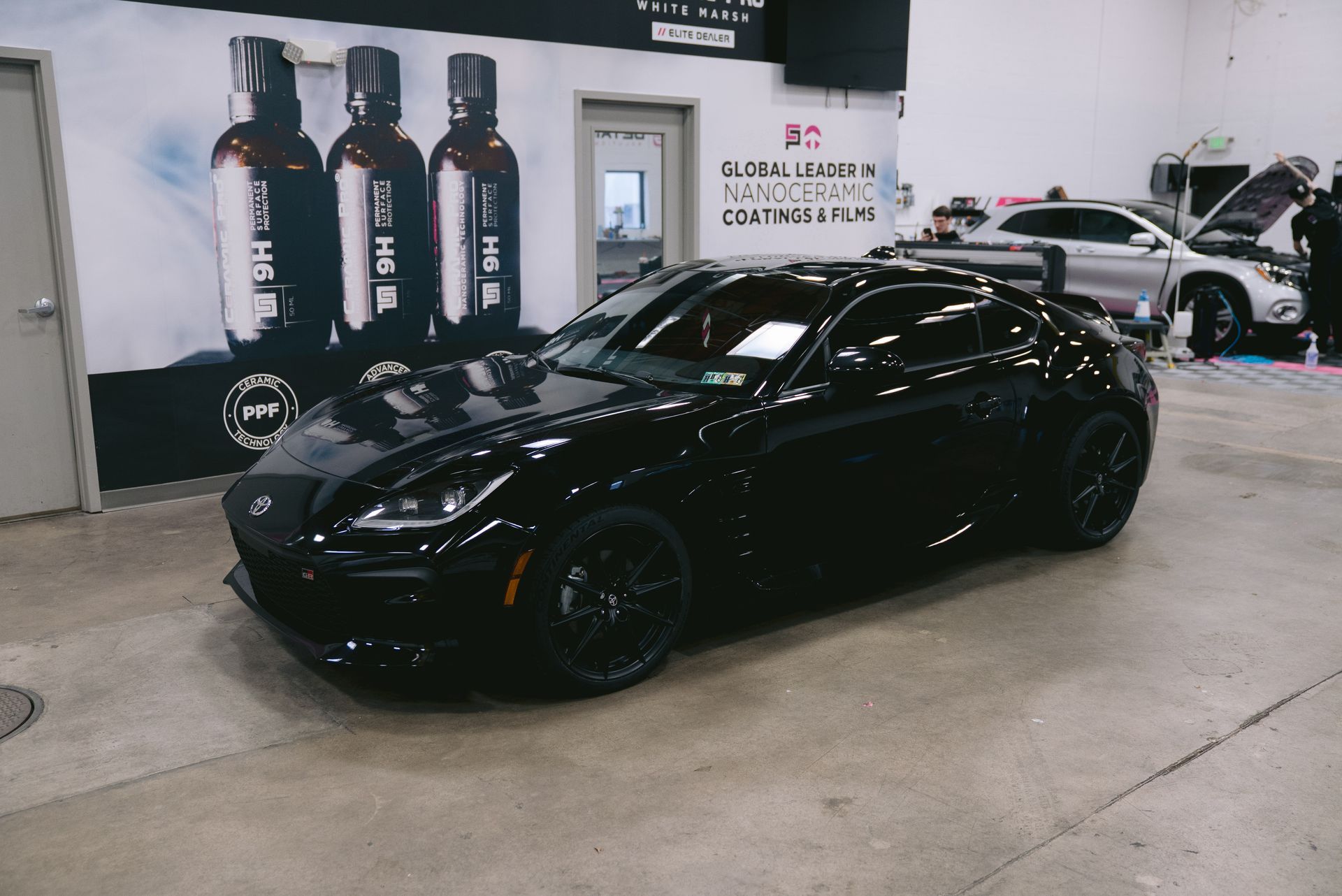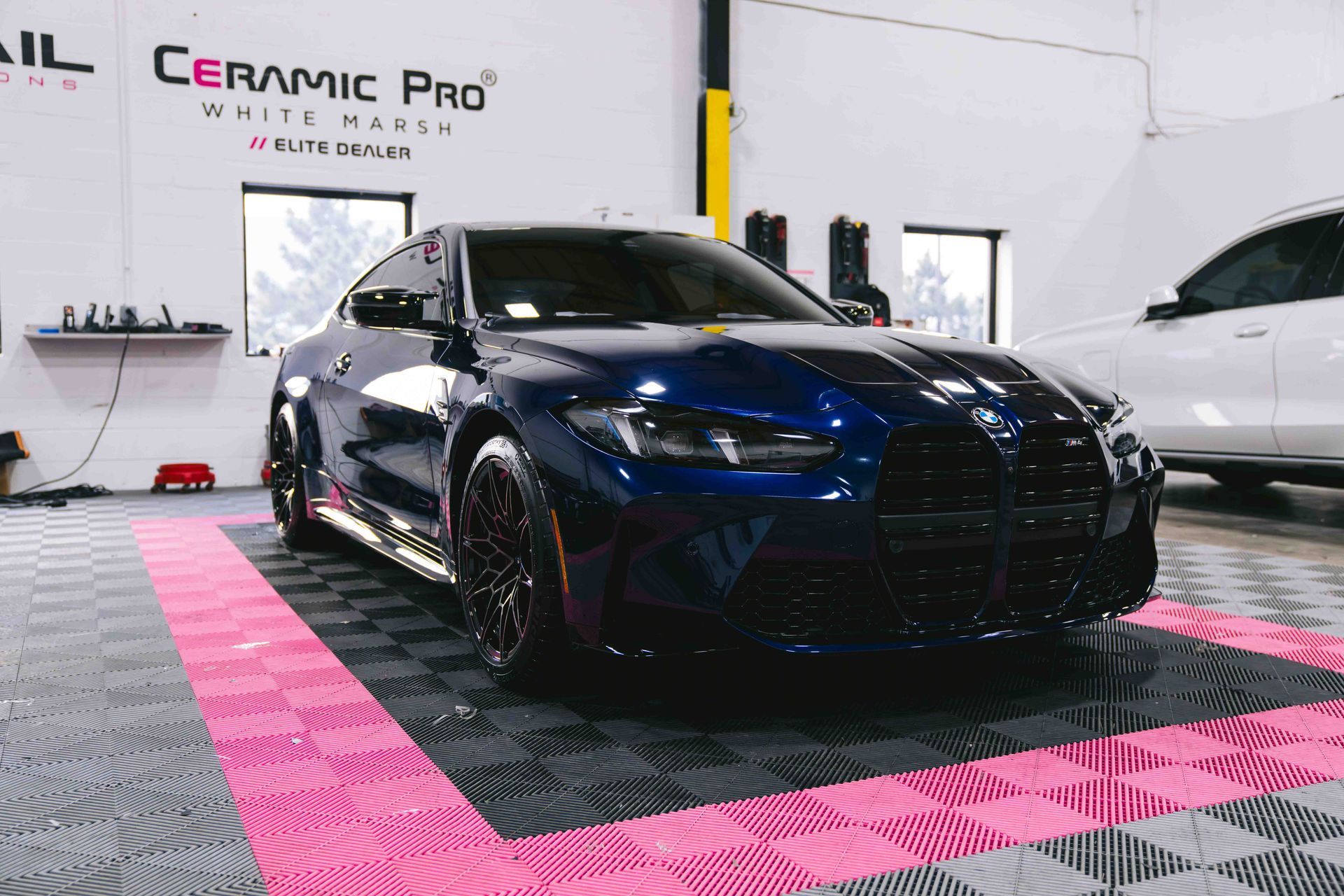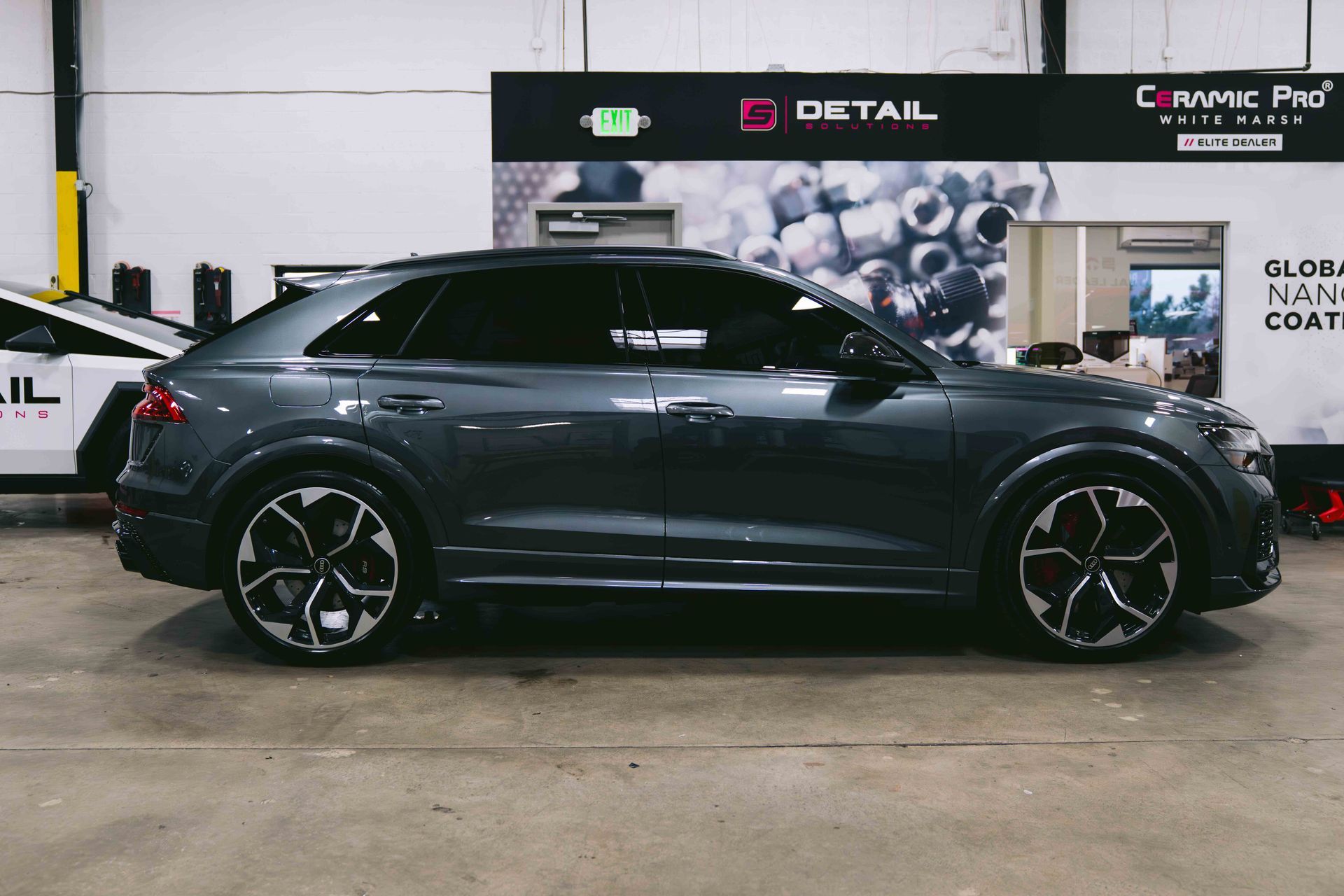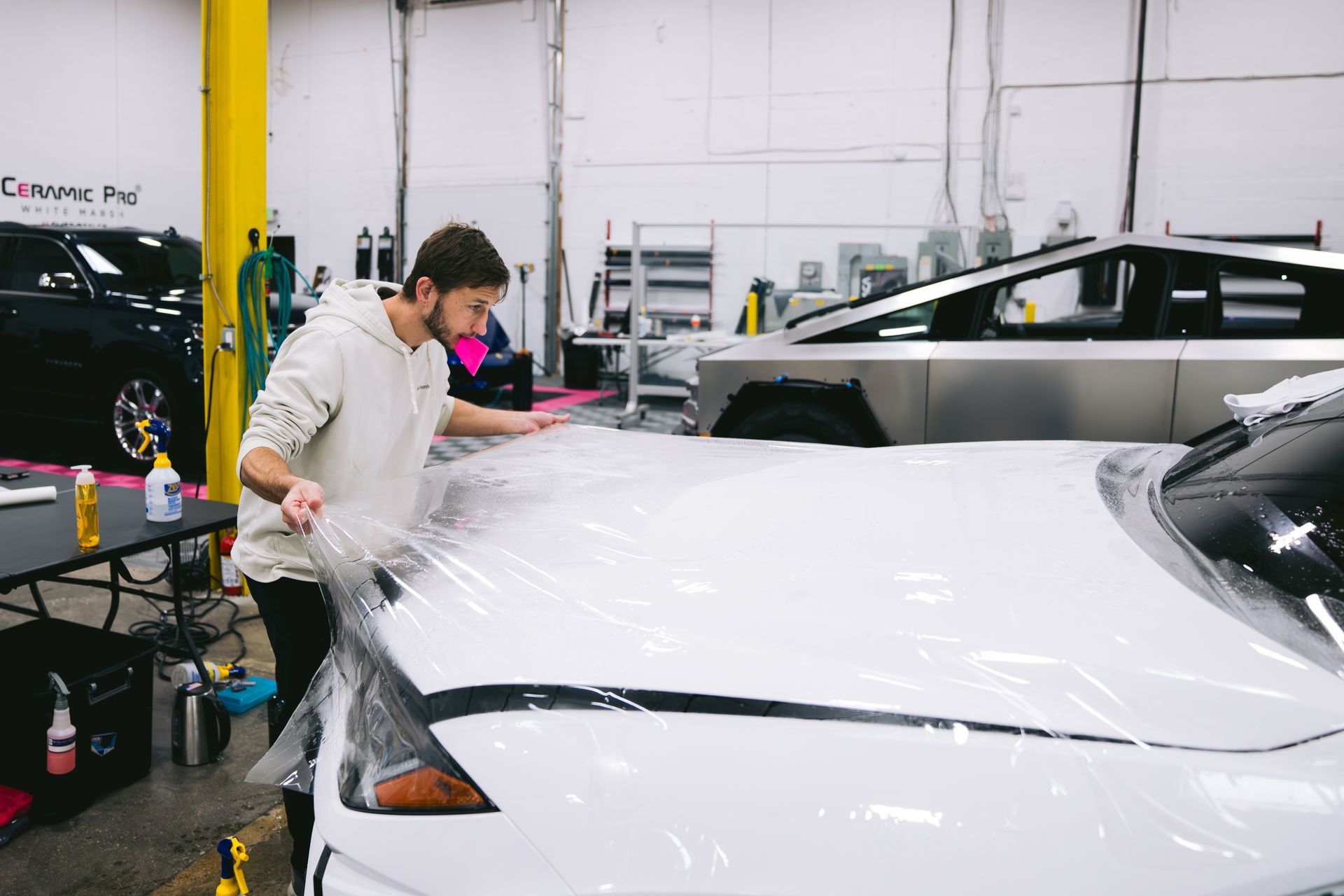That Freshly Detailed Look—Every Day, Thanks to Ceramic Coating
When it comes to car care, keeping your vehicle looking shiny and new is often at the top of our minds. After all, who doesn’t love the feeling of driving a car that turns heads? But achieving that stunning shine goes beyond just regular washes and quick wax jobs—it’s about finding the right protection. Enter
ceramic coatings—a revolutionary solution that not only enhances your car's appearance but also provides long-lasting defense against the elements. In this article, we'll dive deep into the world of ceramic coatings, exploring how they work, the benefits they provide, and best practices for applying them. By the end, you'll be ready to elevate your auto detailing routine and keep your vehicle looking pristine for years to come.
The Benefits of Ceramic Coating
One of the standout features of ceramic coatings is their enhanced protection against UV rays. In Maryland's climate, where sunny days can quickly give way to intense sunlight and heat, protecting your vehicle's paint from oxidation is essential. Without proper protection, vehicles can suffer from fading and dullness due to prolonged UV exposure, which ultimately reduces the car's aesthetic appeal and resale value. Ceramic coatings act as a barrier that protects the paint, similar to applying sunscreen, preventing oxidation and preserving that vibrant showroom shine for a longer time.
Beyond just UV defense, another key benefit of ceramic coatings is their chemical resistance. During the colder months, vehicles often face harsh conditions, including road salt, acidic bird droppings, and other contaminants. Without protection, these chemicals can damage the paint, leading to corrosion and discoloration. Thankfully, ceramic coatings create a tough, hydrophobic layer that resists chemical penetration, allowing contaminants to be easily wiped away during cleaning, rather than damaging the surface beneath.
Another great benefit of ceramic coatings is the long-lasting shine they provide. After application, the coating enhances the vehicle’s reflective properties, giving it a glossy finish that resembles the shine of freshly waxed paint. This not only boosts your vehicle’s appearance but also increases its resale value. Potential buyers are always attracted to well-maintained cars that look as if they just rolled off the showroom floor. A shiny, smooth finish is a surefire way to impress.
Investing in a ceramic coating isn’t merely about making your car look good today—it’s about preserving its integrity for the long haul. The time saved on regular maintenance, such as frequent washes and waxing, is invaluable. By providing an extra layer of protection, ceramic coatings make it easier to keep your car in top shape with less effort.
How to Apply Ceramic Coating
Proper application is crucial for optimal performance. The process of applying ceramic coating doesn’t just make your car look stunning—it creates a long-lasting shield against environmental hazards. By carefully following the steps below, you can ensure that your car is well-protected and visually appealing.
Step 1: Prepare the Surface
Before applying any ceramic coating, it’s essential to prepare the vehicle’s surface properly. Start by thoroughly washing your car to remove any dirt, grime, or old wax. It’s important to use a high-quality automotive soap rather than dish soap, as dish soap can strip essential oils and protection from the paint.
One highly recommended method is the two-bucket method: one bucket for soapy water and another for rinsing your wash mitt. This prevents dirt from being reintroduced to the surface during washing, ensuring a more effective clean.
After washing, it’s time to use a clay bar to remove any embedded contaminants. Think of this step as shampooing your hair before conditioning it; the clay bar will eliminate impurities that could interfere with the adhesion of the ceramic coating. This process is crucial for achieving the smoothest possible finish.
Step 2: Paint Correction
Once the vehicle is clean, the next step is paint correction. This step is essential for creating a flawless surface before applying the coating. Use a dual-action polisher with an appropriate cutting pad and polish to buff out any scratches or swirl marks. The goal here is to smooth the surface to perfection, as any blemishes left on the paint will be sealed in once the ceramic coating is applied.
During this phase, patience is key. Take your time to address each section thoroughly, gradually improving the paint’s clarity and gloss. A smooth surface not only improves the visual appearance but also supports better adhesion of the ceramic coating, ensuring a longer-lasting and more effective protective layer.
Step 3: Applying the Coating
Now it’s time to apply the ceramic coating. Use an applicator pad—preferably a soft sponge or microfiber pad—to apply the coating in small sections using cross-hatch patterns to ensure even coverage. This technique is similar to painting a wall, where you want to maintain consistent strokes across the surface for uniformity.
Remember, a little goes a long way. If you apply too much at once, it may become difficult to remove excess product before it hardens, which could result in streaking or uneven coverage. As you apply the coating, imagine that you're enveloping every contour of your vehicle’s surface, creating a protective barrier that will shield it from future damage while enhancing its shine.
Step 4: Allow to Cure
After applying the coating, the next crucial step is allowing it to cure. Follow the manufacturer's instructions for curing times, which are usually around a few hours, depending on temperature and humidity levels. During this curing period, avoid any water contact with the vehicle, as moisture can interfere with the bonding process, reducing the coating’s effectiveness.
Although the curing process may feel like an eternity, it’s an essential step in achieving long-lasting protection. Once this period is complete, your car will be beautifully protected and gleaming in the sunlight, ready to face the elements.
Maintaining a Ceramic-Coated Vehicle
Ceramic coatings significantly reduce the frequency of car washes, but they don’t make your vehicle immune to dirt, grime, and contaminants. To keep your car looking fresh, it’s essential to continue regular washing.
Regular Washing
Even with a ceramic coating, contaminants like bird droppings, tree sap, and road salts can still cling to the surface. Washing your vehicle regularly helps to preserve its shiny appearance and prolong the life of the ceramic coating. Experts recommend washing your car every two weeks. Think of it as a quick maintenance routine that ensures the coating stays intact and continues to protect your car.
Use pH-neutral car shampoos for cleaning your ceramic-coated vehicle. Harsh detergents can break down the hydrophobic properties of the coating over time, reducing its ability to repel water and contaminants. A gentle wash will preserve the integrity of the coating while keeping your car looking great.
Regular Inspections
Every few months, it’s a good idea to perform a regular inspection of your vehicle. Focus on high-impact areas like the front bumper and hood, where debris and rocks can cause chips in the coating. Regular inspections allow you to spot any minor issues before they become more significant problems. If you do find damage, you can often remedy it with a touch-up rather than reapplying the entire coating.
Touch-Up Applications
For minor imperfections like swirl marks or light scratches, a ceramic coating spray can be a quick and effective solution. These sprays are designed to complement the existing ceramic coating and fill in slight damages, extending the life of the protection. Most importantly, these touch-up sprays are user-friendly and can be applied without professional help, making them a convenient option for maintaining your car’s shine.
Choosing the Best Ceramic Coating
When selecting a ceramic coating, it’s essential to consider several factors. Durability, gloss level, and ease of application are all key considerations when choosing the right product for your vehicle.
Durability
The primary advantage of ceramic coatings over traditional wax is their durability. While traditional wax needs to be reapplied every three to six months, ceramic coatings last for several years without requiring frequent touch-ups. This long-lasting protection is ideal for those who want to keep their car looking great without constant maintenance.
Gloss Level
Another benefit of ceramic coatings is their ability to enhance the shine of your vehicle. A high-quality ceramic coating doesn’t just protect your car—it also adds a beautiful, glossy finish that enhances its overall appearance. Imagine your car gleaming under the sun, its surface reflecting light like a freshly waxed vehicle. This enhanced gloss is more than just eye-catching; it can also boost your car’s resale value, as well-maintained vehicles tend to attract more buyers.
Ease of Application
While some ceramic coatings are designed for professional application, others are user-friendly and suitable for DIY enthusiasts. If you’re looking for a product you can apply yourself, make sure to check whether the coating is easy to apply and whether it requires any specialized equipment. For those who prefer a hands-off approach, professional services like Detail Solutions can handle every step, from surface preparation to curing, ensuring the job is done right.
Cost
Ceramic coatings can vary in price, with higher-quality products often costing more. However, it’s important to weigh the initial investment against the long-term benefits. When you factor in the cost of regular waxing and detailing, the value of ceramic coatings becomes clear. While the upfront cost may be higher, the long-lasting protection and reduced maintenance needs make them a cost-effective option over time.
Ceramic Coating vs. Traditional Wax
Both ceramic coatings and traditional wax provide protection for your car’s surface, but they work in very different ways.
Durability
As mentioned earlier, ceramic coatings are built to last years, while wax needs to be reapplied every few months. This difference in durability makes ceramic coatings the ideal option for those who want long-term protection without frequent maintenance.
Cost Efficiency
Although ceramic coatings have a higher upfront cost, they ultimately save you money in the long run. The need for fewer touch-ups and reduced maintenance costs makes ceramic coatings a cost-effective option compared to traditional wax.
Conclusion
Ceramic coatings are a game-changing solution for those looking to enhance the appearance of their vehicle while providing long-lasting protection. With benefits like UV defense, chemical resistance, and a brilliant shine, they’re a wise investment for anyone who takes pride in their car’s look and wants to preserve its value for years to come.
To ensure that your ceramic coating lasts, follow proper application techniques, perform regular inspections, and touch up the coating as necessary. Whether you choose to apply the coating yourself or trust a professional, your vehicle will benefit from the enhanced protection and stunning shine that ceramic coatings provide.
Why Choose Detail Solutions for Your Ceramic Coating Needs?
At Detail Solutions, we are dedicated to offering top-tier ceramic coating services that protect and preserve your vehicle in the most effective way possible. Our team of trained professionals uses only the best products, ensuring that your car receives the highest quality protection. With our attention to detail and commitment to customer satisfaction, we provide a seamless, stress-free experience from start to finish.
Don't settle for anything less than the best—let us help you achieve the perfect shine and long-lasting protection your vehicle deserves.
Contact Detail Solutions today at 443‑241‑8443 to schedule a consultation or book your ceramic coating appointment. Protect your investment, elevate your car’s appearance, and enjoy peace of mind knowing that Detail Solutions has your back every step of the way!


